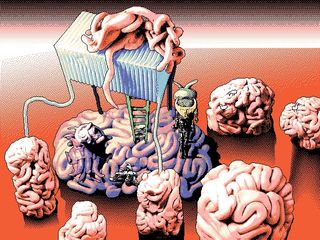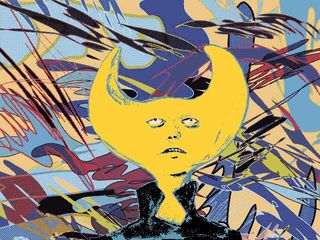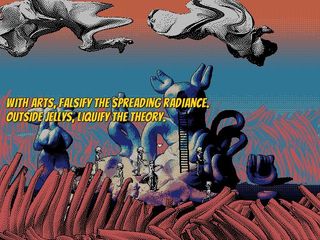Remembering Hylics, the surreal art RPG
With Hylics 2 on the way, it's time to look back at the original strange museum of pixels and clay.
'Can games be art' is a boring question. 'Can games be art galleries' is a much better one. The description seems to fit Hylics, which Mason Lindroth released in 2015. He called it "a recreational program with light RPG elements." It's really a pseudo-game made to be visited rather than played, with building blocks made of acid colors, scrambled words, clay, and an utter love for the absurd.
Over the years, Mason Lindroth has become one of the most interesting names in the indie scene thanks to his distinctive art style. His works mix digital art with claymation: a technique nowadays rarely employed in movies, and even more rarely in games (the only other recent experiments that come to mind are Dujanah and Armikrog).

Mason makes clay models and takes pictures while moving them against a green screen, obtaining beautiful, twisted animations, pixelated and yet deliciously tactile. You can see the results in his short games like Beachcombers, Weird Egg & Crushing Finger, and Journalière. Hylics (it means "matter") was his first commercial endeavor, and mixed all-new visual pieces with older assets from past projects. The result was like a best of compilation, a big visual museum of bouncy animations and clayful delight.
Dedusmuln wrought an engrossing panorama!
Hylics has no real story, no sense, and no point, apart from its utter commitment to aesthetic. You are a moon-faced golem made by a kingly narrator, and you wander around and kill baddies because that's what protagonists do. Sometimes you fight monsters in turn-based battles; other times you navigate mazes or recruit new party members. But mostly you wander around, see things, poke clay sculptures, and smile.

Hylics may be plotless, but it is not short of words. NPCs ramble poetic, incoherent thoughts, half-beautiful and half-unnerving. The text is procedurally generated, but the result is more reminiscent of the collective art experiments called exquisite corpse than of the elegant, coherent narratives usually made with procedural text tools like Tracery. (Check Twitter bots like Unknown Peoples and A Strange Voyage for examples of what Tracery can do).
Battles are equally delirious, with enemies spouting nonsensical attacks in pure Earthbound fashion. ("Dedusmuln wrought an engrossing panorama!") The stats remain unexplained, their names cryptic and mysterious. Hylics actively discourages you from spending too much time on menu screens, as if ashamed of being an RPG. It would be wrong to call the combat light, though—the system is actually fairly polished, with a good variety of items and skills. Every piece of equipment has a definite effect, rather than being just an additional layer of hit points.
The physicality of the world extends to the consequences of battle. Defeat sees our protagonist melted, compressed and thrown in limbo, where he can then get stronger by throwing the clay flesh dropped by enemies in a meat grinder. There is no level-up system: only the cycle of matter being reshaped into new forms.
The biggest gaming news, reviews and hardware deals
Keep up to date with the most important stories and the best deals, as picked by the PC Gamer team.

The best moments of Hylics are when it reminds you that it's not truly a videogame, but more of a toy—when you're playing a song with friends, picking vegetables, building sandcastles on a beach. Small Interactions that make the environment melt and crumble under your touch. It's a small world, yet it feels more lively than bigger RPGs full of static, untouchable elements.
Hylics may be considered part of the "weird RPG Maker games" trend, like Gingiva and Space Funeral, but is spiritually more akin to Magic Wand. Both are games that don't truly want to be RPGs, but use elements of the RPG formula. They're there to evoke a mood, not to be played with.
Hylics' greatest merit and its greatest limitation is its devotion to not being a typical RPG in any way. It could have had a plot, but didn't try to. It could have a more strategic battle system, but it didn't want to. It's a game that doesn't want to become more than the sum of its excellent parts, content with its absurdism and its aesthetic.

It will be interesting to see how the recently announced Hylics 2 will shape up. The trailer shows jumping and shooting, and seems to promise a more gamey approach. The original's lack of these things is why some might see Hylics as a wasted opportunity, while others appreciate its purity and integrity. Either way, it's a fascinating clay museum completely worth the admittance ticket.
Most Popular

